Back in April, we visited Pixar Animation Studios in Emeryville, California, to chat with all the creative minds behind Toy Story 4. Here's everything we learned:

1. In terms of timeline, only a couple of months have passed since Toy Story 3 (which came out nine years ago!).
2. The gang pretty much looks the same EXCEPT for additional subsurface scratches that were added to show the wear and tear of being a toy. Those details are there to remind you that the characters are plastic toys that have lived a full life.
3. For example, Woody now has pilling on his shirt. And if you look closely, you can see the red thread that was used to re-stitch his arm in Toy Story 2!
4. As for Buzz, some of his stickers have started to bubble and there are now scratches near his joints where his arms and legs bend.
5. You’ll definitely want to keep your eyes peeled for tons of Easter eggs, because, uh, this film has more than any previous Pixar movie ever.
6. In fact, director Josh Cooley has over 10 pages of imagery that list every single Easter egg that’s hidden in the film, like the guitars from Coco.
7. You’ll especially want to pay attention during any scenes in the antique shop, which is filled with over 10,000 items, like Merida's bow from Brave.
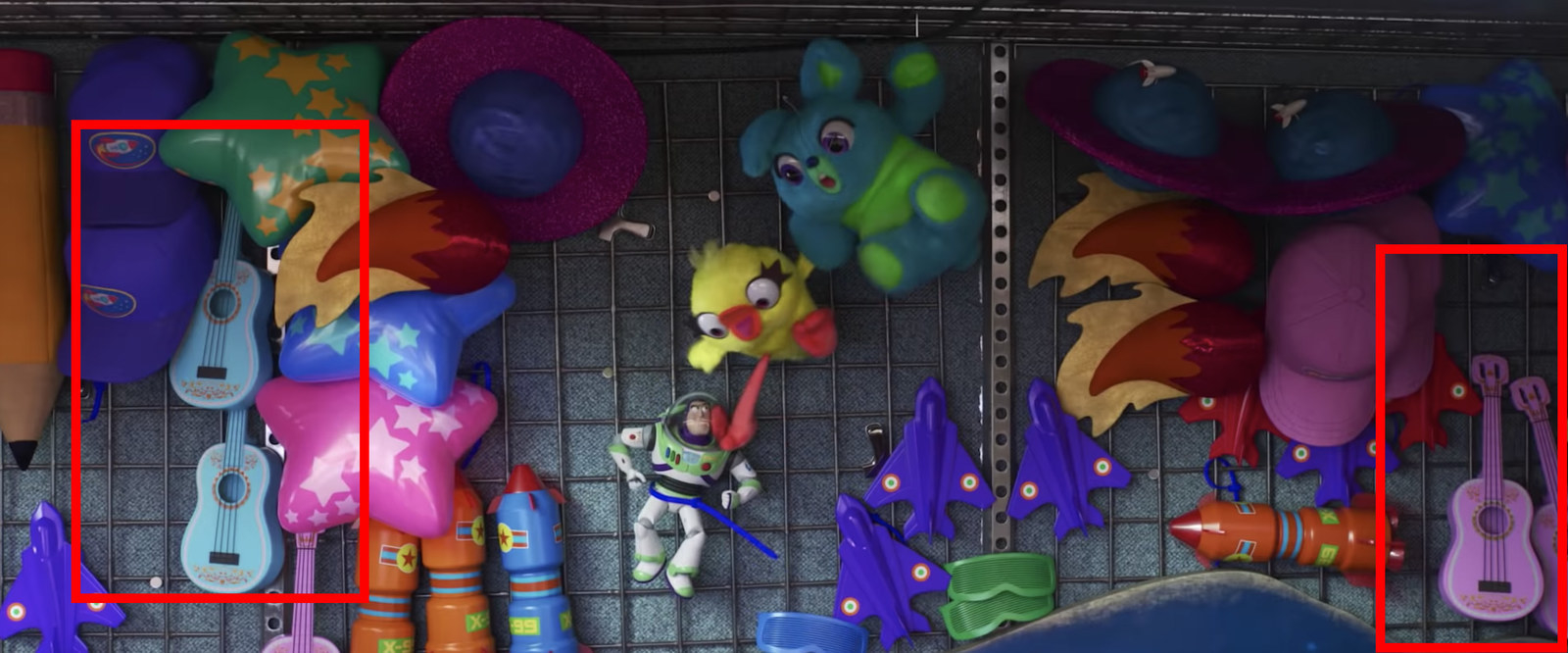
8. Actually, let’s talk about how there are *literally* over 10,000 objects that had to be created for the antique shop…because that’s a lot! Though some were repurposed items from past Pixar films, the majority had to be custom designed.
9. Creating a single prop takes anywhere from a few hours to a few weeks, so it’s no wonder that it took nearly two years to create the antique shop and everything inside it.
10. In addition to Easter eggs from past films, animators also included some shoutouts to friends who worked on the film. For example, there's a painting of the dogs from Up playing poker and a reference to Pixar's address, but there's also a painting of a team member named Steve Crew (not pictured below).

11. The film was originally supposed to focus on a love story between Woody and Bo, but it turned into more of an adventure film.
12. The movie has been called “Peep” within the walls of Pixar.
13. Bo had her own animation team whose job it was to make her a really special and unique standout character who didn’t fall into the tropes that women in action films usually fall into.
14. For Bo’s personality, movements, and overall aesthetic, they took inspiration from Rey (from Star Wars), Dottie (from A League of Their Own), the Bride (from Kill Bill), gymnast Aly Raisman, dancer Sharna Burgess, bo staff martial arts, and spear throwing (just to name a few!).
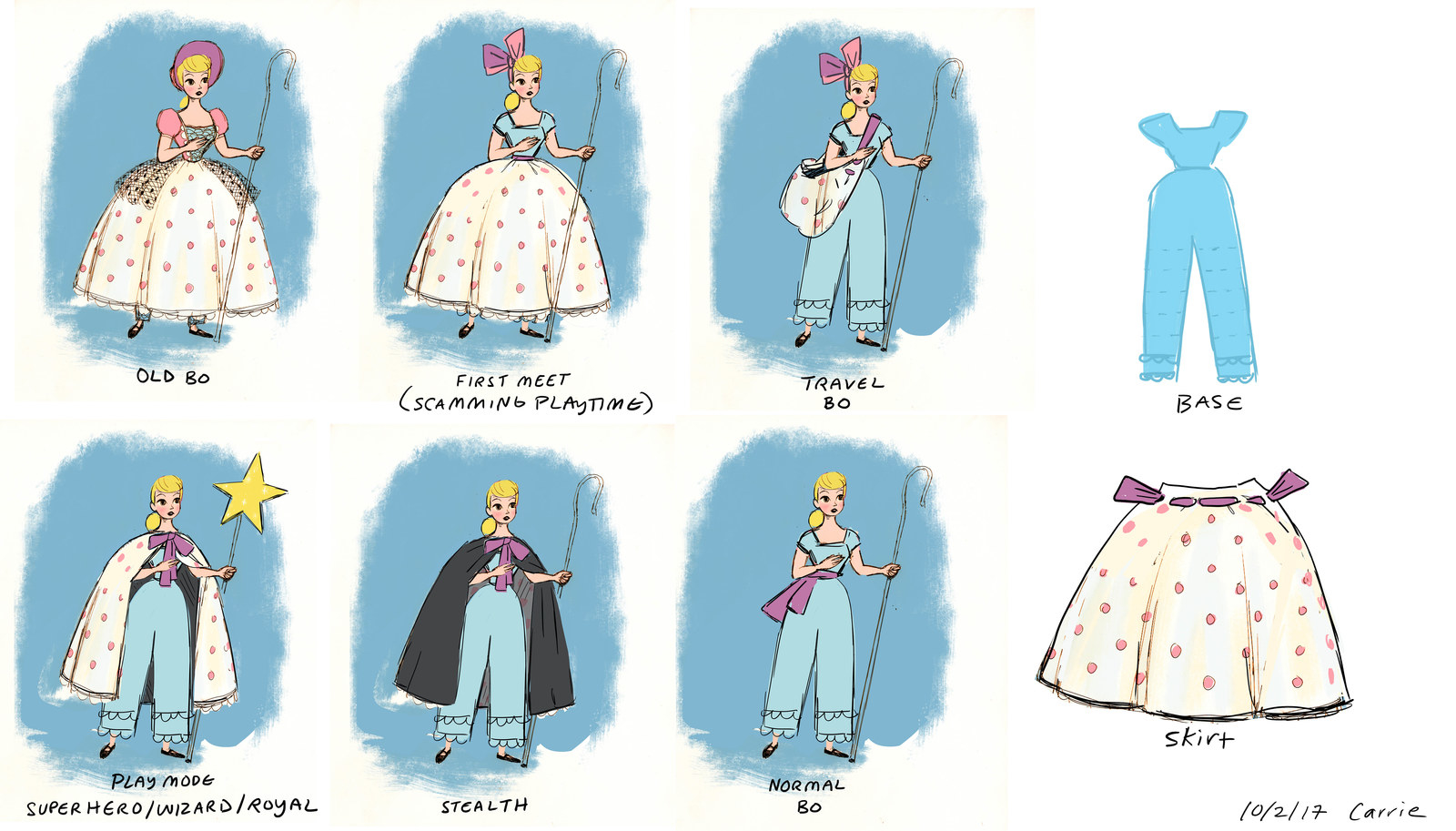
15. And you might not have realized this, but Bo and her sheep are porcelain...because she's actually a part of a lamp set that was in Andy's sister's room!
16. And animators took special care to really understand the material that Bo is made of. That means they paid attention to the glaze she would have and all of the subtle cracks that appear in ceramics.
17. In the movie, her ultimate goal becomes leaving the safe life on a shelf that her lamp has provided her and setting out into the world as a figurine. She's tired of waiting for life to happen. She just wants to be a toy again.
18. But she isn't just any toy — she chooses life as a "lost" toy, where she has no kid. Every kid is her kid! To sum Bo up, she's back in action and she's unapologetically confident!
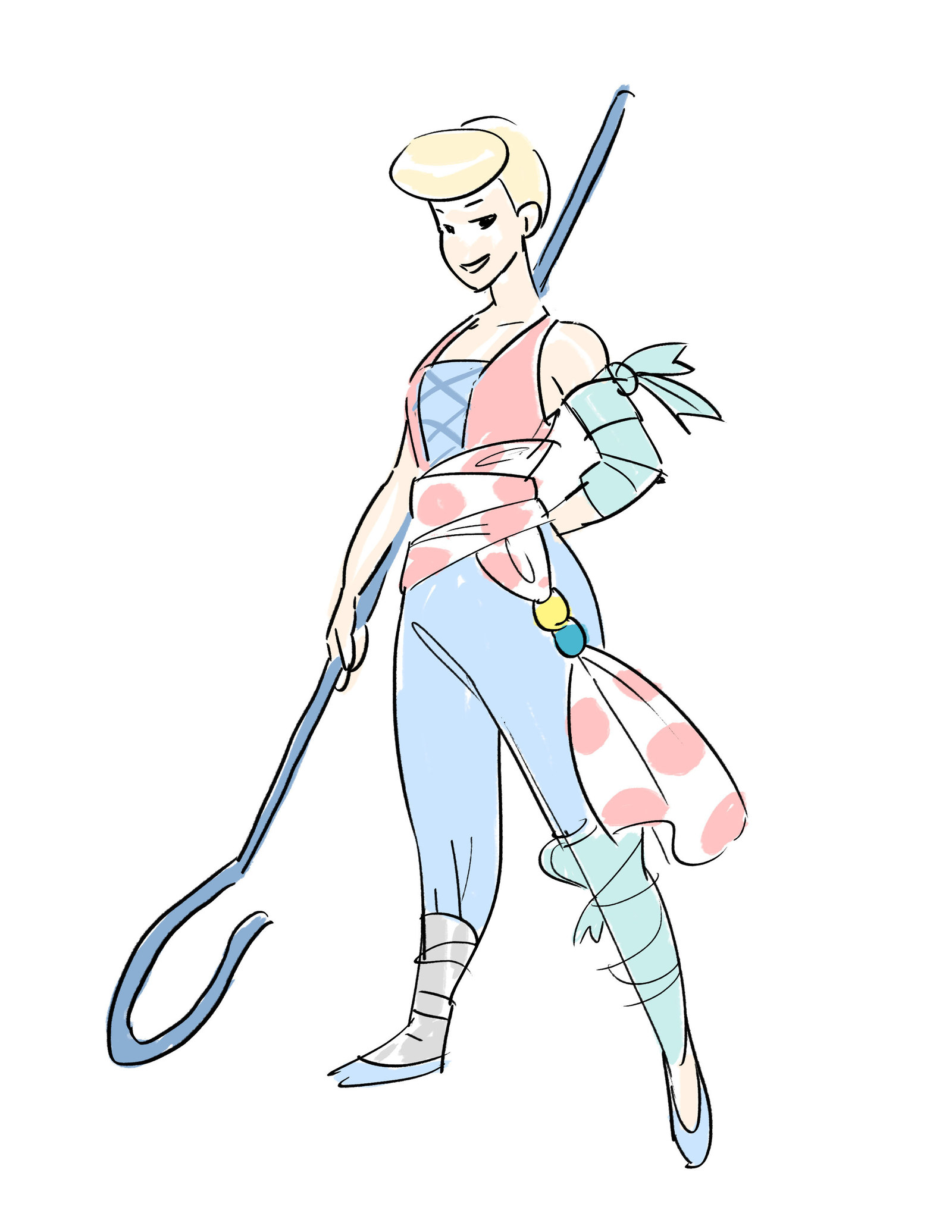
19. Though Don Rickles died in 2017, his voice will be featured in the film as his iconic character, Mr. Potato Head — he had previously signed on for the film and his family asked if Toy Story 4 could find a way to use his voice. To do so, the team searched through everything he’s recorded during the past 24 years to find clips they could use in the film.
20. Keegan-Michael Key and Jordan Peele, who voice plush carnival toys named Ducky and Bunny, actually recorded the majority of their scenes four years ago.
21. Sorry, guys, but Ken isn’t in this film. He’s back at Sunnyside!
22. To make Benson and his three other dummy henchmen, animators studied the complex internal mechanics of dummies. They then mimicked their limited facial controls and rigid movement.

23. Since one of the new characters, Duke Caboom, is Canadian, they wanted to cast a Canadian actor: That’s how they landed on Keanu Reeves…who apparently was jumping around on Pixar tables doing poses he thought Duke would do.
24. Pixar actually had to get permission to use the Canadian flag in the film…so they reached out to the Disney office in Canada to help them get the rights.
25. Speaking of Duke…he lives within a set of a set! There’s a pinball machine within the antique store that a lot of tiny characters hang out in.
26. Teams figured out the design basics for Forky — a spork that's come to life, thanks to Bonnie — in a workshop where the crew built their own versions of the spork.
27. Animator Claudio de Oliveira actually had a pretty hard time finding sporks to experiment with…until he found a local pizza place that had them.
28. After going on research trips to MANY antique stores and always seeing creepy dolls in the corners, they landed on Gabby Gabby being the perfect villain. In past Toy Story films, the villain often doesn’t reveal itself until later on, but with Gabby Gabby, they wanted everyone to know she's the villain right away.
29. Gabby Gabby’s hair is red because blonde hair just takes too much time and money to render. (In EXTREME layperson’s terms, when you render blonde hair, because it’s almost clear-ish, light is sent through the tubes of the hairs, which then keeps endlessly bouncing and refracting through the hair, resulting in a process that takes a very long time.)
30. It turns out Christina Hendricks was the perfect person to voice her because, uh, apparently as a kid she used to play with ventriloquist dummies and as an adult…she has a lot of doll heads in her house.

31. There are also so many INSANELY TINY details that the details team had to pay attention to. For example, Gabby Gabby has very specific scuffs on the front of her shoes that would only come from the very specific way that a doll like her would walk. You might not see it in the film, but it's there!
32. Another tiny detail that someone might not think to include — but that the animators of the film definitely paid attention to — is the welding and warping of the carnival booths. No detail is too small!

33. One reason why details, no matter how minute, are so important to the animation team is that they're creating a world about toys, which, by nature, are tiny. That means that we see a lot of detail from their perspective that we don’t necessarily see from a human perspective.
34. Another present detail in the film is dust — like, a lot of dust — which creates a richer environment in the antique store scenes. Animators would go between a lot of dust and just a few specs of dust until they got their ideal look and feel.

35. Just like live-action films, Toy Story 4 uses a camera…of course, theirs is a virtual camera.
36. Though it isn’t a physical camera, it is mathematically true to a real camera and has a lens with a focal length, depth of field, f-stop, etc. It also mimics camera movement as if it’s on a physical rig, tripod, track, dolly, or crane.
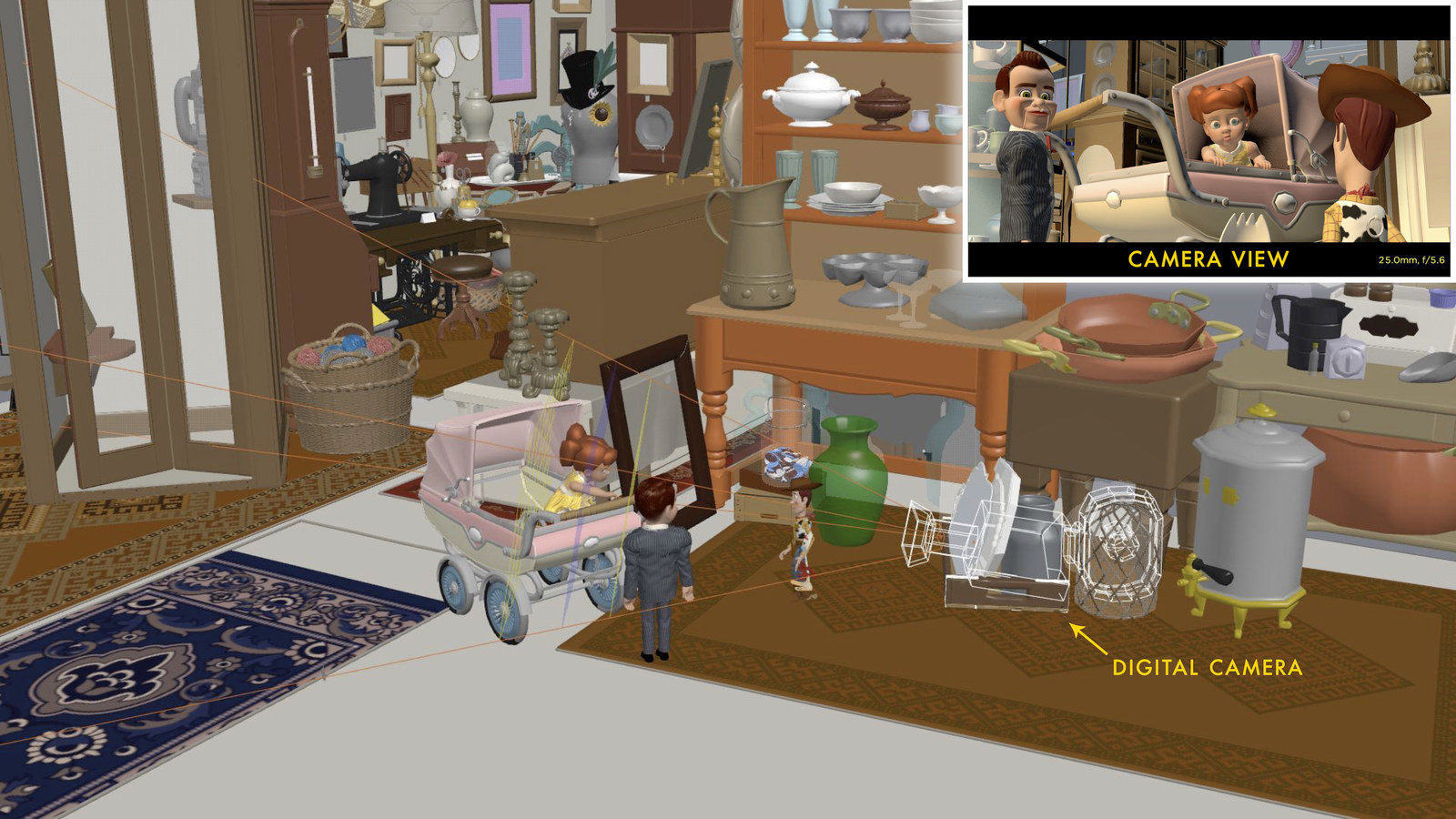
37. The film starts off with a massive rain and thunder scene, which was just not possible 24 years ago — at the time, they didn’t have the technology to make the rain interact with or touch anything else in the scene.
38. In fact, you probably didn’t notice, but in Toy Story, the rain never actually touches anything. To make it look like the world was affected by the rain, they had a cool water effect on the window and made the road wet to trick people into believing it. Now when you watch Toy Story 4, you’ll see the rain actually interact with the scene.
39. Compared to the 129 Pixar employees who worked on Toy Story, a total of 1,247 worked on Toy Story 4.
40. With today's technology, they could render all of the original Toy Story in less time than it takes to actually watch the movie.
41. In contrast, because of the advancements in animation that they've made — which has led to to animation that takes longer to render — today it takes anywhere from 60 to 160 hours to render one frame. So though the jump in technology is exponential, they've eaten the gains by adding more complexities.
42. Advancement in lighting technology plays a big part in the film. For example, 24 years ago for Toy Story, the Dinoco shot was probably only able to use six or seven light sources. Today, that shot would have used 200 or 300 lights.
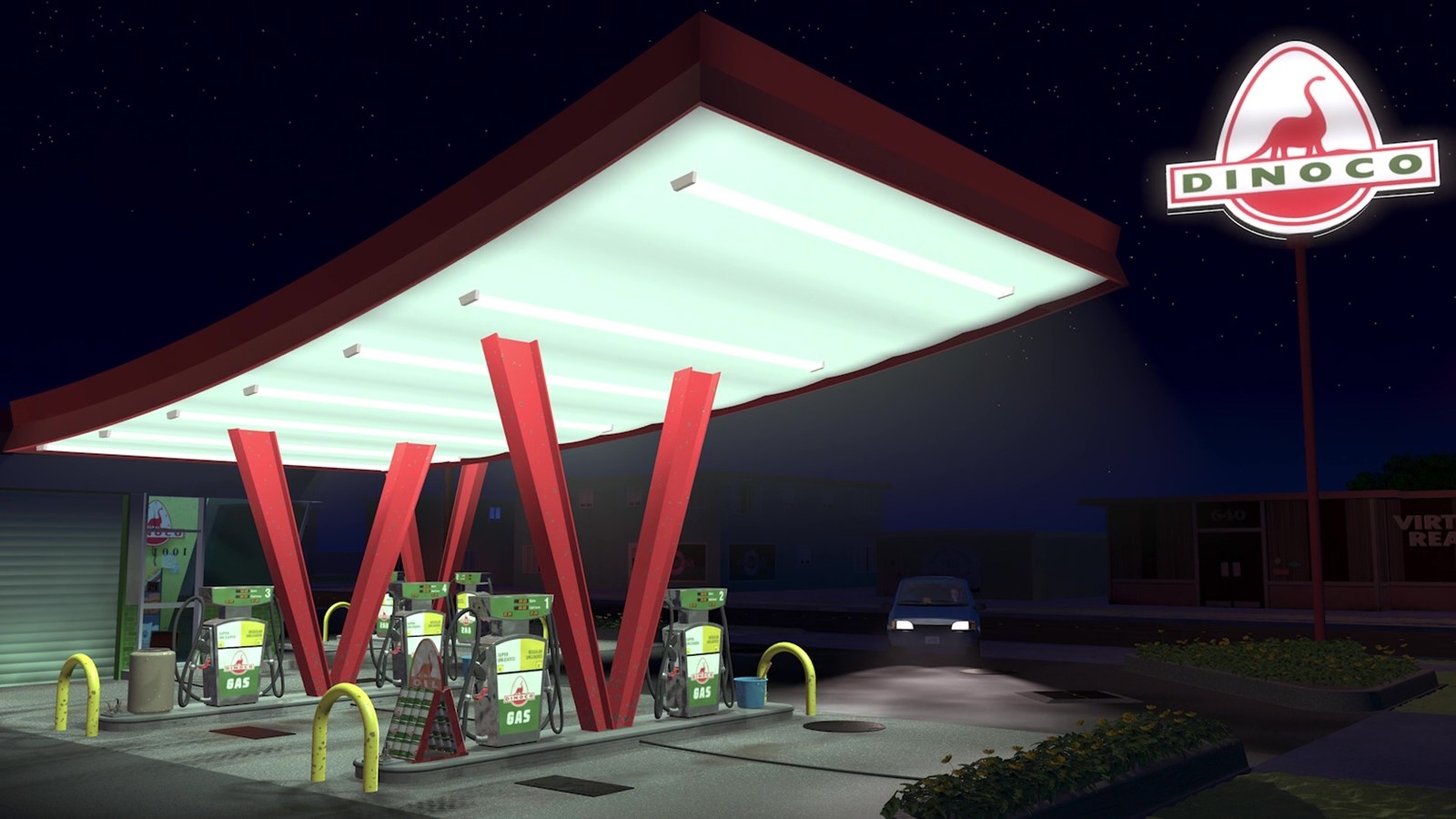
43. Additionally, new software now mimics the physics of light and how it interacts with materials and objects in the scene. They also don’t have to tell the software what the light should do: It figures it out on its own, which saves the lighting team lots of time.
44. A new animation rigging system allowed animators to build characters that are soft, squishy, and plush-like, such as Ducky and Bunny.
45. Throughout a 4-year period, there were 8 to 10 screenings of the film in front of internal audiences. Some were altered versions of the previous screening, while some were a completely new film from beginning to end.
46. Another change from the previous three movies? Toy Story 4 was shot in widescreen to increase cinematic effect.
47. When you look at side-by-sides of Toy Story and Toy Story 4, it’s shocking just how far animation has come in almost 25 years.
48. And finally, according to the producers and director, they want audiences to walk out of the theaters feeling warmth, nostalgia, and joy.


